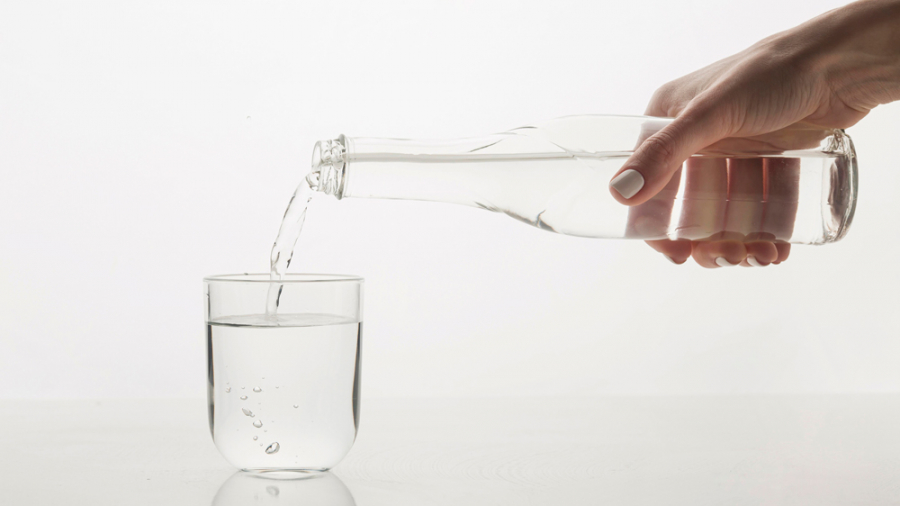Did you know that half of the world’s hospital beds are filled with people suffering from water-related diseases? According to the United Nations, 1 in 3 people live without safe drinking water and 1 out of every 5 deaths worldwide under the age of 5 is due to a water-related disease.
Tiny worms and bacteria naturally live in water. Most of these bacteria are pretty harmless but some of them can cause life-threatening diseases in humans. Furthermore, since they can’t be seen, they can’t be avoided.
Think about it – every drop of dirty water can be a potential killer!
Hidden substances in the water can make you sick
While consuming adequate water daily is vital for our wellbeing, what we drink plays an extremely crucial role too. Did you know that most of our drinking water doesn’t just contain H2O but also potentially a vast number of contaminants?
These contaminants enter our water supply in a number of ways such as through agriculture runoff, septic systems, industrial waste, landfills, leaking gas tanks, as well as copper and lead pipes.
5 categories of contaminants in water:

Biological Contaminants
- Bacteria
- Parasites
- Viruses

Organic Contaminants
- Herbicides
- Pesticides

Inorganic Contaminants
- Asbestos
- Sediment
- Total dissolved solids (Calcium, Fluoride, Sulphate)
- Heavy metals (Arsenic, Nitrate)
- Radioactive ions
- Pharmaceutical drug residues

Disinfection By-products
- Chlorine
- Trihalomethanes

Trace Pharmaceuticals & PCP
- Pharmaceutical drug residues
- Chemicals in personal care products (PCP)
‘Sick’ water can kill. It often looks perfectly clean and harmless, and is usually also tasteless. According to the WHO, at least 2 billion people use a drinking water source contaminated with faeces. Contaminated water and poor sanitation are linked to transmission of diseases such as cholera, diarrhoea, dysentery, hepatitis A, typhoid, and polio. Absent, inadequate, or inappropriately managed water and sanitation services expose individuals to preventable health risks.
How can you prevent drinking sick water?
Water treatment devices are used to ensure our drinking water stays uncontaminated. But with so many different water filters/purifiers in the market, it can be confusing as to how to make the best selection. Here’s what you need to look out for:
1) KNOW THE DIFFERENCE
There is a vast difference between a water filter and a water purifier. A water filter removes sediment or particulates (mud, sand, rust, etc.) and may contain a carbon filter (charcoal) to reduce chlorine, but is not able to eliminate heavy metals, dissolved solids/substances, radionuclides, micro-plastics and other contaminants. A water purifier, however, is able to reduce all these contaminants and more.
2) ENSURE IT IS CERTIFIED
Whatever device you purchase, one of the most important considerations is international certification. Many water treatment products in the market today make outrageous claims. The only way to know whether these claims are true is to check if the products are certified.
3) FIND THE BEST PURIFICATION TECHNOLOGY
The Reverse Osmosis (R.O.) process closely resembles nature’s own unique purification process where water is forced through a special membrane and purified at the molecular level. According to a report by the Associated Press in 2008, Reverse Osmosis (R.O.) is the only technology that can remove virtually all contaminants including bacteria, viruses, heavy metals, and minute particles, generating the purest water possible.
Elken’s award-winning R.O. Water Purification System does more than purify water. It produces pure, perfect water every time.
Engineered utilising a high-tech Reverse Osmosis purification system, Bio Pure’s N-Series is scientifically proven to effectively remove minute contaminants as small as 0.0001 microns via a 5-step filtration process to produce pure H2O.
For more information about how it works, visit our website or read more about N-Series in the links below.

Source:
https://www.who.int/news-room/fact-sheets/detail/drinking-water
https://www.worldvision.org/clean-water-news-stories/what-is-in-the-water-will-make-you-sick
https://lifewater.org/blog/7-most-common-waterborne-diseases-and-how-to-prevent-them/

